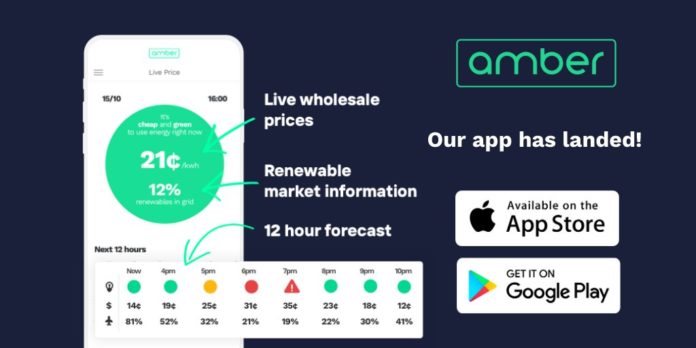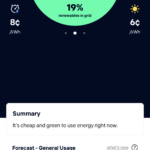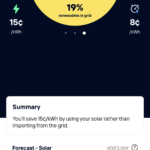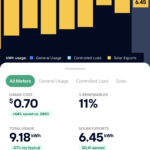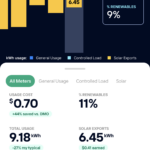While technology has revolutionised so much of modern life there’s still some things left behind, and the humble utility provider has been a big one.
When you look at household expenses, your utilities can be a significant portion; between electricity, gas and water we spend hundreds if not thousands a year.
Surely technology could bring these dinosaurs into the future, right? We’ve got smart electricity meters, why haven’t we got smart electricity companies?
Well, now we do.
For the last month or so, I’ve been one of the fortunate early customers of a new kind of electricity company, called amber electric.
The premise is rather simple; taking advantage of smart meters that can provide energy usage data on a half hourly basis, amber does something very clever – it, too, charges by the half hour but instead of charging a flat rate per kilowatt hour (like all other utilities do), it simply charges you the wholesale rate.
Don’t have a smart meter? No problem, you can get one installed for free. No solar? Doesn’t matter – obviously it helps but it’s not required.
For the typical electricity user, amber represents an opportunity for a huge saving. Our previous provider charged a flat rate of 23c per kWh, and amber’s wholesale rate is typically around the 15-16c mark, depending how much renewable energy is in the grid.
Speaking of renewables, if you’ve got solar, you benefit even further. Not only do you get a feed-in tariff that varies on demand – usually between 6 and 17c per kWh – but if your solar exports exceed your household demand, you’ll pay nothing for what you use and the excess earns you money.
Sure, other providers do the same, but with amber you can see the price you pay / price you earn in real time. This gives you a huge opportunity:
- if demand is high and your solar is producing power, you can turn off unnecessary power and export more. You can earn a lot of money doing so.
- if demand is high and you’ve got no excess solar capacity, you can reduce your demand to save what you spend. Also helpful.
- at any time, you can see what your usage will cost so you can tweak your usage accordingly to save or produce more.
All this is managed through an easy to use mobile app (or amber’s website) putting the power in your pocket.
Every 24 hours – usually around 7am Melbourne time – your actual usage for the past day is loaded and you can see what you used when, and what you paid for it. This also gives you a graph where you can see what grid power you used, what solar you produced, and if you’ve got a controlled load (eg. A water heater) what it used, too.
My favourite feature though is the notifications, so if the price spikes you’ll get a push alert on your mobile so you can immediately take action to reduce your power demand and save money. This is important, because passing on wholesale cost doesn’t always mean you save money; wholesale pricing can spike when there’s extreme demand. During these times you’ll either want your solar pumping, or you’ll want to turn off big consumers.
Unfortunately though, those surge prices usually occur on blazing hot days when you probably want to run the air conditioning. Ultimately an hour or two of surge pricing doesn’t affect your bill significantly; you’ll still typically save with amber.
amber offers a guarantee of sorts, too. If your monthly bill exceeds what you would’ve paid under the default market offer for your area, that’s the most you’ll pay. Sure, if you get to this point, there’s little advantage to being with amber – but that’s the whole idea. You shouldn’t get there.
How does amber make its money? A $15 monthly membership fee is their only income; they don’t charge a percentage on top of wholesale rates or anything else. That $15 monthly fee isn’t all that expensive and doesn’t offset the savings you’ll otherwise make. It’s still possible – especially during summer – to receive a zero or negative bill, but that probably isn’t a realistic aim.
You’ll do much better to simply aim for savings and you’ll probably pay little more than $20-$30 a month for your household electricity and that includes the membership fee. Not bad.
amber electric is invite only for now, but the wait list isn’t super long and it’s well worth jumping on board to try out a 21st century utility. amber proves it can be done, can save you money and be easy to use and monitor too without it becoming a preoccupation.

